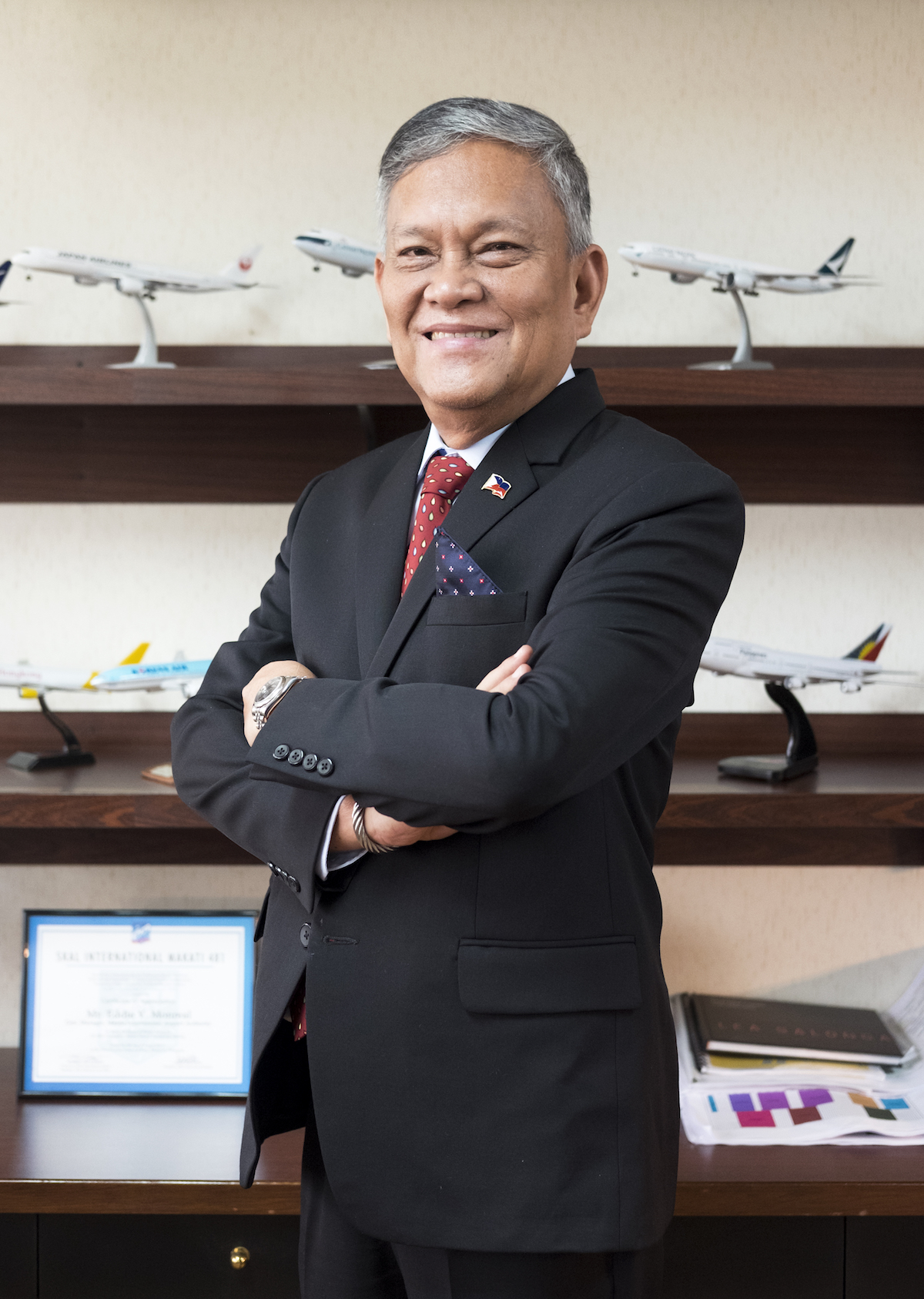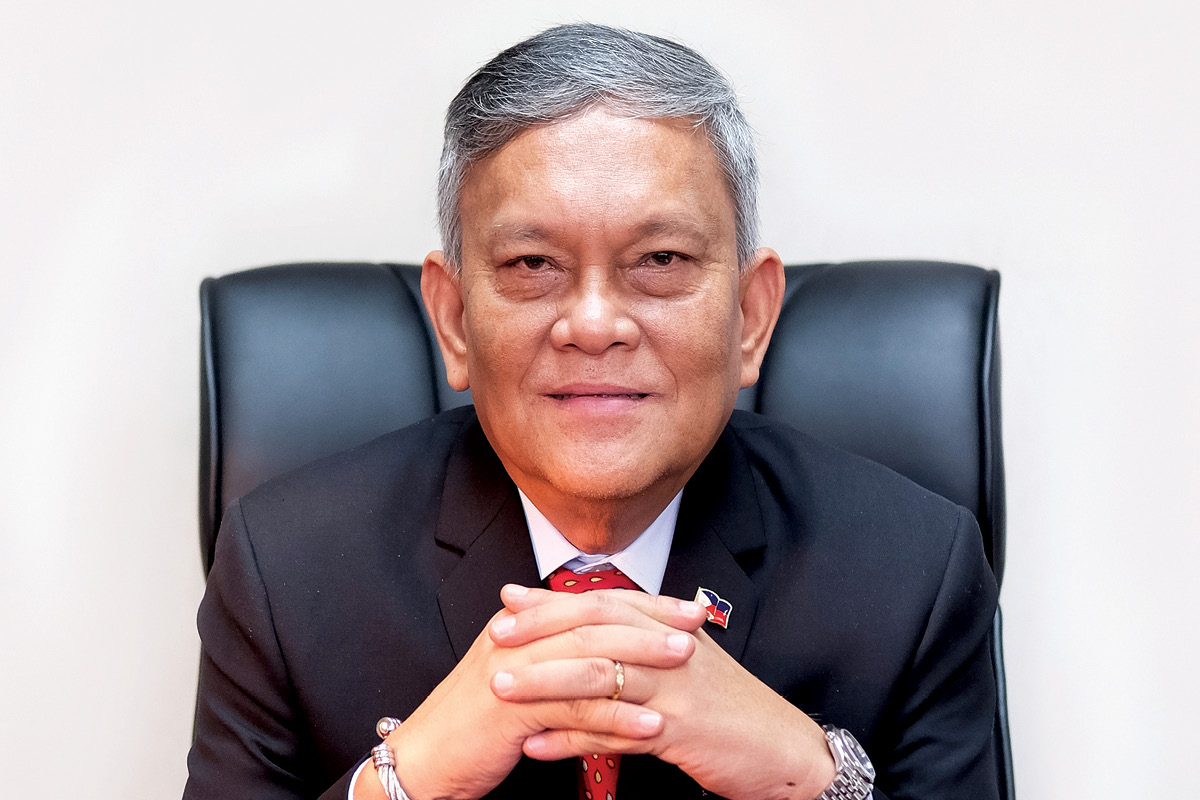Between 2010 and mid 2016, Manila’s Ninoy Aquino International Airport (NAIA) was notorious for being one of the worst airports in the world. A source of great shame for the nation, it caused untold inconvenience and worry for more than 32 million passengers each year, with 53% of flights delayed due to poor runway management.
Also lacking were basic navigational systems, air-conditioning, waiting benches, back-up generators, and clean amenities. This era of disgrace came to an end when Eddie V Monreal took over as General Manager of Manila International Airport Authority (MIAA) in July 2016.
Changing one of the worlds worst airports
As a government-owned and controlled corporation, MIAA is responsible for the management of the four-terminal NAIA, located approximately seven kilometres south of Manila. The airport is the main international gateway for travellers to the Philippines and serves as a hub for Cebu Pacific, Philippines AirAsia, Cebgo and Philippine Airlines.
NAIA works alongside the smaller Clark International Airport, which caters to low-cost carriers through its inexpensive landing fees. By 2020, MIAA aims to be the leading organisation in airport development and management.
In pursuing excellence in customer service, world-class facilities, and high-quality security and safety standards, MIAA encourages international and domestic air travel to promote the Philippines as a centre of renowned trade and tourism.

This year celebrating four decades in the aviation industry, Eddie has cemented his reputation as an airport guru in South East Asia. He started work at Cathay Pacific in 1982 as a Traffic Officer. Rising through the ranks, he was appointed Station Manager in 1996 until his retirement in 2014.
It wasn’t long before Eddie was pulled back into the industry as a consultant for MIAA during the launch of a new and improved administration, and in 2016 he was appointed General Manager based on his unrivalled knowledge and insight.
“These varying roles have helped me to understand the ins and outs of the airport – I know where to start and what challenges to look for. Having been in the private sector for most of my career, it’s been quite a change to work for the government,” observes Eddie.
These varying roles have helped me to understand the ins and outs of the airport.
“Decisions cannot be made autonomously here and there are a lot of procedures to work through – especially in terms of maintenance, operations and execution – before we can come to a solution. Our office has a different work ethic and a different set of responsibilities, and I have tried to complement the government’s desires with our offering. I have also tried to inject the same culture I learned from my time in the private sector.”
Minimising delays and increasing commercial flights
Among Eddie’s many reforms was the revival of the Airport Security Centre in coordination with the Police Aviation Security Group, and the creation of a central desk connecting all departments to provide immediate response to passenger requests or concerns.
To address the problem of congestion MIAA partnered with the Civil Aeronautics Board and the Civil Aviation Authority of the Philippines to introduce restrictions on general aviation and aerial works traffic at NAIA, minimising delays and increasing the number of commercial flights per hour. This has resulted in a massive increase in the frequency of on-time departures from 47% to 80%.
“We have restricted general aviation to a certain period in the day and we are in the process of moving these activities to a completely new terminal. However, this can only be done during a very small window of time,” says Eddie.
“When I first started, the most important task was to uplift the morale of the people working at the airport. We needed better structure and openness. I have also been working hard to improve
the customer experience, and you’re now able to see the distinct changes and improvements. I have aimed to build efficient services and ensure timely responses to matters that need special attention.”
To enhance passenger convenience, MIAA has installed new waiting benches; repaired baggage conveyor belts and air-conditioning systems; and has given passengers the option to use regular taxis and buses as well as the official airport taxi.
“I measure success by the positive feedback we receive from the public. Currently, many airports aren’t known to be very hospitable,” says Eddie. “In terms of customer service, we are in the lead because our service comes from the heart.”
There will always be challenges
He may have overcome great adversity so far, but Eddie is not short of challenges. According to the International Air Transport Association (IATA), Manila’s population of 25 million means that the country requires an airport with a capacity to handle 100 million passengers.
Despite being designed for a capacity of 30 million passengers per year, NAIA’s passenger volume topped 40 million in 2017. IATA has recommended that if space restriction is preventing NAIA from being developed into a multi-runway hub, another site must be found in close proximity to Metro Manila where an airport with two runways could be built and expanded. Until the government decides on further action, Eddie is under the pump to enhance the capacity of NAIA, optimise the runway, and develop Clark as a secondary airport
in Manila.
“There are a growing number of operators and airlines that would like
to operate here in Manila,” he says. “The demand has always been there but the question is, how can we improve runway efficiency given our restricted space capacity? That’s why we are leaning on Clark Airport for support,” explains Eddie.
“We only have one runway in operation and so we are investing heavily in measures to improve its efficiency. To decrease congestion, we have implemented the five-minute rule, which means that if pilots aren’t ready within five minutes of us requesting clearance, they go to the end of the line – we’ve put some order to it.”
Creating airports of the future
A number of major improvements are currently in MIAA’s pipeline, including refurbishing Terminal 2 and upgrading the food court. Eddie has also set in motion the long-awaited construction of rapid exits in the runways totalling PHP300 million; the acquisition of a Stop Bars signalling system to guide aircraft to gates; and the installation of a high-resolution CCTV system.
“There are some big-ticket decisions that have to be made to create the airport of the future. We’re looking at an airport that is being built for decades to come.”
The relationship MIAA has with its partner airlines, ground-handling agencies and infrastructure providers is vital to the management and ultimate success of the airport.
“We treat our airline partners as allies. It’s a very stable partnership with an open-door policy, and together we address concerns for the benefit of all customers. Without successful airlines, we’re not a successful airport,” says Eddie. “We give the airlines as much access as our limited capacity allows.
“We have an extensive supply chain in each department throughout the airport but most important is the supply chain that ensures the highest security for our guests. We continue to work with the supplier that installed the product or service initially, so they have been with us for a long time. We also have strong relationships within NAIA’s leadership team and with government, customs, immigration and quarantine. This has helped us increase customer service satisfaction and the smart flow of operations.
“In the past, Manila was once referred to as the worst airport in the world and we are determined to create a new image for NAIA as a friendly and efficient airport.”



